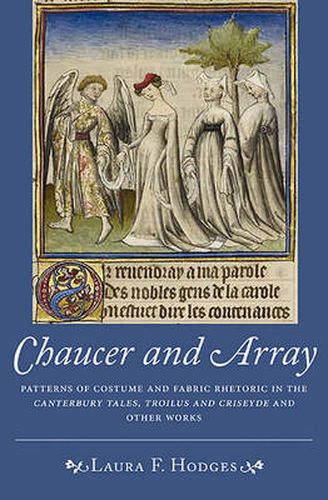Readings Newsletter
Become a Readings Member to make your shopping experience even easier.
Sign in or sign up for free!
You’re not far away from qualifying for FREE standard shipping within Australia
You’ve qualified for FREE standard shipping within Australia
The cart is loading…






The use Chaucer made of costume rhetoric, and its function within his body of works, are examined here for the first time. The study explores Chaucer’s knowledge of the conventional imagery of medieval literary genres, especiallymedieval romances and fabliaux, and his manipulation of rhetorical conventions through variations and omissions. In particular, it addresses Chaucer’s habit of playing upon his audience’s expectations, derived from their knowledge of the literary genres involved - and why he omits lengthy passages of costume rhetoric in his romances, but includes them in some of his comedic works, It also discusses the numerous minor facets of costume rhetoric employed in decorating his texts.
Chaucer and Array responds to the questions posed by medievalists concerning Chaucer’s characteristic pattern of apportioning descriptive detail in his characterization by costume. It alsoexamines his depiction of clothing and textiles representing contemporary material culture while focusing attention on the literary meaning of clothing and fabrics as well as on their historic, economic and religious signification.
Laura F. Hodges blends her interests in medieval literature and the history of costume in her publications, specializing in the semiotics of costume and fabrics in literature. A teacher of English literature for a number of years, she holds a doctorate in literature from Rice University.
$9.00 standard shipping within Australia
FREE standard shipping within Australia for orders over $100.00
Express & International shipping calculated at checkout
The use Chaucer made of costume rhetoric, and its function within his body of works, are examined here for the first time. The study explores Chaucer’s knowledge of the conventional imagery of medieval literary genres, especiallymedieval romances and fabliaux, and his manipulation of rhetorical conventions through variations and omissions. In particular, it addresses Chaucer’s habit of playing upon his audience’s expectations, derived from their knowledge of the literary genres involved - and why he omits lengthy passages of costume rhetoric in his romances, but includes them in some of his comedic works, It also discusses the numerous minor facets of costume rhetoric employed in decorating his texts.
Chaucer and Array responds to the questions posed by medievalists concerning Chaucer’s characteristic pattern of apportioning descriptive detail in his characterization by costume. It alsoexamines his depiction of clothing and textiles representing contemporary material culture while focusing attention on the literary meaning of clothing and fabrics as well as on their historic, economic and religious signification.
Laura F. Hodges blends her interests in medieval literature and the history of costume in her publications, specializing in the semiotics of costume and fabrics in literature. A teacher of English literature for a number of years, she holds a doctorate in literature from Rice University.